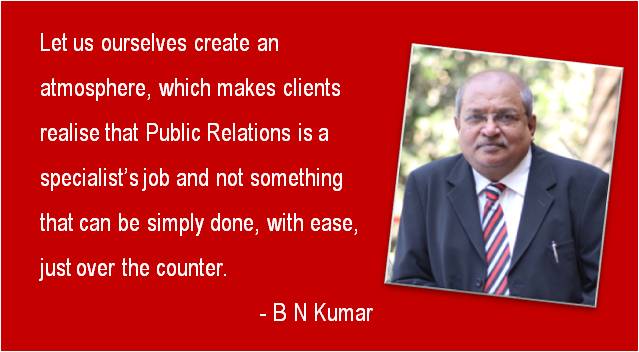Public Relations has come a long way ever since the first Press Release was issued on October 28, 1906 and has emerged as a specialist’s job much as a doctor who prescribes medicines for his patients and lawyers who file petitions on behalf of their clients.
The first Press Release was issued this week in 1906 – on October 28, to be precise and thus began public relations or media relations. New York Times was so impressed with the release sent out by Ivy Lee on a railway accident that it carried the story verbatim! PR has come a long way ever since and now continues to evolve as technology pervades us. With this evolution, client and boss expectations are also bound to change. But development of professionalism in PR, like in any other field, is a time-consuming process. One should not expect changes overnight. As Mahatma Gandhi said, Be the change that you want to see in the world. We PR practitioners must be the change engines.
Often, one is foxed to hear PR practitioners saying, ‘my boss wants this’ or, the clients wants this to be done’. And then our PR friends wonder as to ‘why can’t they change?’
It is quite fine to take briefs from bosses and clients, but it is not quite necessary to follow their instructions without applying mind. Clients are not supposed to be fully aware of what can be done, particularly with media relations. They might ask to get a particular job done by hook or crook. You don’t have to take that hook-or-crook route since there is nothing like that. It is like trying to run a train on a concrete road or drive your car on railway tracks!
Do you ask your doctor for a particular medicine for your sickness? Or, will you tell your lawyer under which section your petition or case is to be filed in a court? Similarly, PR professionals should be able to assert themselves and give advice from the position of an authority.
Most client/boss expectations arise out of lack of understanding of media and PR functioning. It is our job to say what can be done and what cannot without sounding negative.
Let us first understand that PR is not like buying an OTC drug. Like one does not need a doctor’s prescription to buy an OTC drug, one does not need PR help if media relations can be done with such ease – over the counter!
Let us ourselves create an atmosphere which makes clients realise that PR is a specialist’s job. To that extent, we need to start giving strategic inputs – not about business but media business. We can even offer non-media solutions to certain issues.
Last month, I was at #PRAXIS6 event at Jaipur where we heard Dr Pragnya Ram, Executive President of Corporate Communication and CSR at Aditya Birla Group, talking about her 50-year long experience and evolution of PR as profession. I asked her as to how Mr Kumar Mangalam Birla treats her department and what kind of freedom do they enjoy. Her response was quick and candid. “Mr Birla gives us lot of freedom and allows the department officials get trained and move on to take independent responsibilities.” “He listens to PR,” she said and was quick to add: “you have got to earn your respect through your work.”
That was a great learning for all those 600 plus delegates present at the venue: make yourself important to be heard!
Dr Ram hasn’t achieved her position overnight and certainly not without putting in serious efforts. For those of us who have been Birla watchers, Dr Ram’s department is full of case studies from which we keep learning.
At the risk of sounding a preacher, I must say that we PR professionals should keep on learning and broadening our horizon. We should try and work on innovative communication solutions.
Templates, at best, could serve as good reference points but not to be used for cut-and-paste work. Using templates blindly, like OTC drugs, could lead to disasters. I have seen some senior managers landing themselves in a soup.
Similarly, case studies could help us understand how a particular problem in a specific geography and situation can be resolved. But this reference material should not be used for effortless, cut-paste work. For instance, the ideas and strategy for a senior Congress leader cannot be replicated for a BJP or a Shiv Sena leader. One who tries to indulge in such a cut-paste operation is bound to end up with a rotten egg on his face!
Case studies and working with experienced professionals can help you to think, strategise but you have to be original in your prescription. Some doctors may try to to prescribe certain drugs based on trial-and-error formula, but communication professionals cannot.



Leave a comment